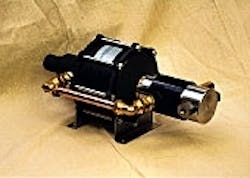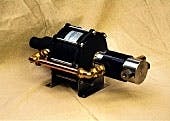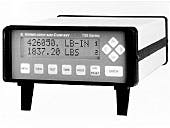Equipment/Software/Literature
New logging tool
The newest member of the NMR logging tool family, the CMR-Plus tool, is designed to improve wellsite efficiency and reduce rig time.
The new design features an antenna configuration that allows delivery of high-resolution NMR measurements at logging speeds as much as 2,400 fph and an enhanced acquisition sequence for accurate measurements in small pore spaces. These features help make it easier to acquire NMR measurements in combination with a range of other formation evaluation services.
Source: Schlumberger Reservoir Evaluation, Wireline-Open Hole,
110 Schlumberger Drive, Sugar Land,
TX 77478.
New range of gas boosters
A new range of gas boosters uses compressed air as the driving force. The GBS Series of boosters can generate as much as 1,280 bar when supplied with 107 bar inlet gas pressure and driven by 7 bar air.
The units are suited for boosting
bottled air, nitrogen, helium, and other inert gases for pressure testing or charging components such as accumulators and downhole tools used in oil field operations.
Boosters can be supplied as stand alone units or in a power pack form complete with air controls, inlet gas fitter, output pressure gauge, and pressure release valve. In the case of the latter, the equipment is mounted within a space frame complete with carrying handles.
Source: Hydratron Ltd., Unit 2, Blue Chip Business Park, Atlantic St., Broadheath, Cheshire, England WA14 5DD.
Strain gauge signal conditioners, readouts
The new 700 Series strain gauge signal conditioners and readouts will handle one (Model 701) or two (Model 711) strain gauge transducers and a math or calculated channel. They are suited for load cells, scales, pressure transducers, accelerometers, reaction, slip-ring, and rotary transformer coupled torquemeters.
A two-line alphanumeric backlit LCD can display any two selected channels or one channel with either limit or input/output status. Data display is full six digits with 0.01% resolution. Five-character engineering unit legends are user programmable for all channels. Data sample rate and max/min update rate is 2,000 hz/channel.
Limit checking is performed at 1,000 hz. Transducer calibration is automatic, requiring no manual adjustments. System setup is through the front panel keypad or remotely over the imbedded serial communications port. English language prompts guide the user through the setup. Setup information is stored to EEPROM, no batteries are used.
Two analog outputs are available, autoscaled to plus or minus 5 v dc or plus or minus 10 v dc. The instrument includes a seven pole Bessel response anti-aliasing filter and user selectable four pole Bessel response digital filters. Ten user-assignable logic input/output and 47 built-in data analysis functions make possible test/control applications without additional hardware or software, the firm points out.
Source: Himmelstein & Co., 2490 Pembroke Ave., Hoffman Estates, IL 60195.


